Liwei Cai
Exploring Transfer Learning For End-to-End Spoken Language Understanding
Dec 15, 2020

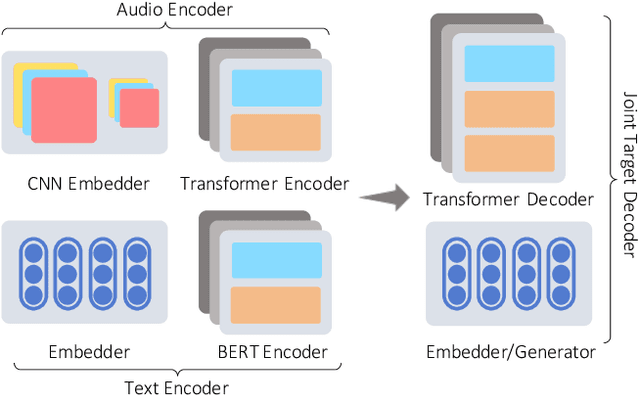

Abstract:Voice Assistants such as Alexa, Siri, and Google Assistant typically use a two-stage Spoken Language Understanding pipeline; first, an Automatic Speech Recognition (ASR) component to process customer speech and generate text transcriptions, followed by a Natural Language Understanding (NLU) component to map transcriptions to an actionable hypothesis. An end-to-end (E2E) system that goes directly from speech to a hypothesis is a more attractive option. These systems were shown to be smaller, faster, and better optimized. However, they require massive amounts of end-to-end training data and in addition, don't take advantage of the already available ASR and NLU training data. In this work, we propose an E2E system that is designed to jointly train on multiple speech-to-text tasks, such as ASR (speech-transcription) and SLU (speech-hypothesis), and text-to-text tasks, such as NLU (text-hypothesis). We call this the Audio-Text All-Task (AT-AT) Model and we show that it beats the performance of E2E models trained on individual tasks, especially ones trained on limited data. We show this result on an internal music dataset and two public datasets, FluentSpeech and SNIPS Audio, where we achieve state-of-the-art results. Since our model can process both speech and text input sequences and learn to predict a target sequence, it also allows us to do zero-shot E2E SLU by training on only text-hypothesis data (without any speech) from a new domain. We evaluate this ability of our model on the Facebook TOP dataset and set a new benchmark for zeroshot E2E performance. We will soon release the audio data collected for the TOP dataset for future research.
Unsupervised Morphological Paradigm Completion
May 20, 2020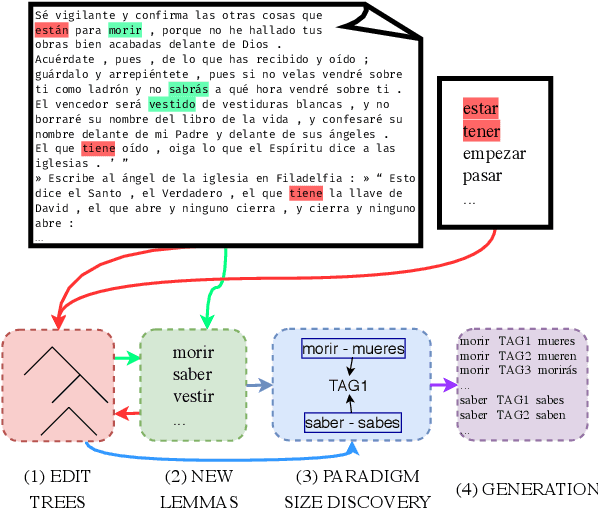
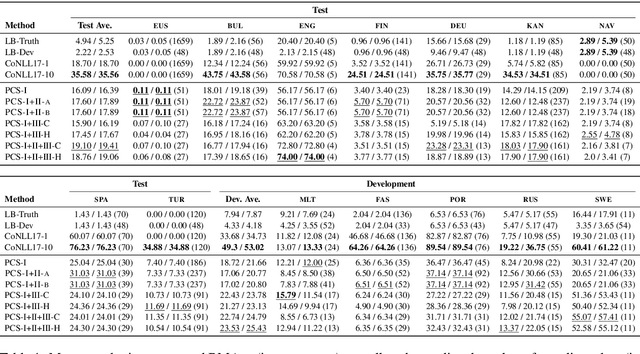
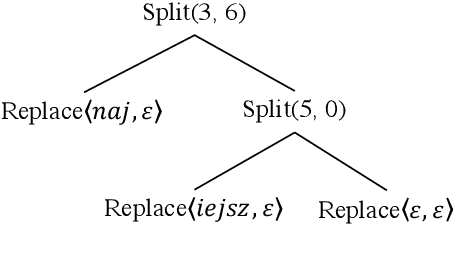
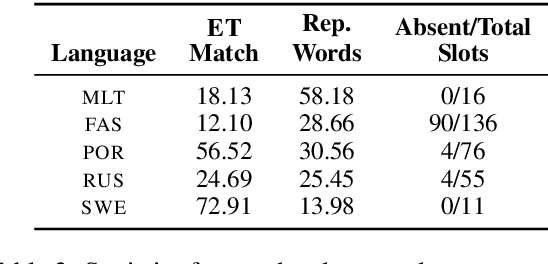
Abstract:We propose the task of unsupervised morphological paradigm completion. Given only raw text and a lemma list, the task consists of generating the morphological paradigms, i.e., all inflected forms, of the lemmas. From a natural language processing (NLP) perspective, this is a challenging unsupervised task, and high-performing systems have the potential to improve tools for low-resource languages or to assist linguistic annotators. From a cognitive science perspective, this can shed light on how children acquire morphological knowledge. We further introduce a system for the task, which generates morphological paradigms via the following steps: (i) EDIT TREE retrieval, (ii) additional lemma retrieval, (iii) paradigm size discovery, and (iv) inflection generation. We perform an evaluation on 14 typologically diverse languages. Our system outperforms trivial baselines with ease and, for some languages, even obtains a higher accuracy than minimally supervised systems.
KBGAN: Adversarial Learning for Knowledge Graph Embeddings
Apr 16, 2018
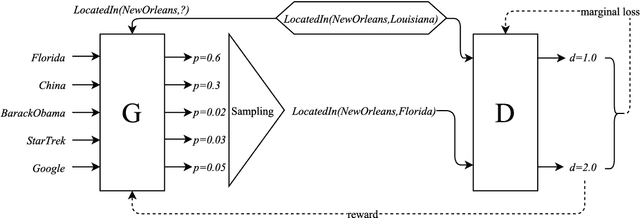


Abstract:We introduce KBGAN, an adversarial learning framework to improve the performances of a wide range of existing knowledge graph embedding models. Because knowledge graphs typically only contain positive facts, sampling useful negative training examples is a non-trivial task. Replacing the head or tail entity of a fact with a uniformly randomly selected entity is a conventional method for generating negative facts, but the majority of the generated negative facts can be easily discriminated from positive facts, and will contribute little towards the training. Inspired by generative adversarial networks (GANs), we use one knowledge graph embedding model as a negative sample generator to assist the training of our desired model, which acts as the discriminator in GANs. This framework is independent of the concrete form of generator and discriminator, and therefore can utilize a wide variety of knowledge graph embedding models as its building blocks. In experiments, we adversarially train two translation-based models, TransE and TransD, each with assistance from one of the two probability-based models, DistMult and ComplEx. We evaluate the performances of KBGAN on the link prediction task, using three knowledge base completion datasets: FB15k-237, WN18 and WN18RR. Experimental results show that adversarial training substantially improves the performances of target embedding models under various settings.
 Add to Chrome
Add to Chrome Add to Firefox
Add to Firefox Add to Edge
Add to Edge